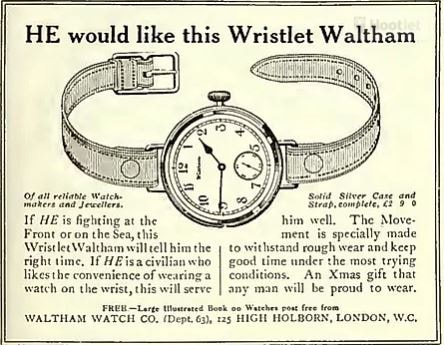
At the beginning of the twentieth century, when most people were out and about, they got the time from church bells and factory whistles. Many had mantel or wall clocks in their homes. Alarm clocks had been patented in the middle of the nineteenth century and were being used increasingly. But outside the home, people went without a watch.

Hinged covers protected crystals on pocket watches. Trench watches often had hinged cages that didn’t obscure the numerals. These soon became fixed.
The creation of luminous dials helped soldiers see the time in dim light.






